Acne all over the body, the causes of which can be very diverse, causes a lot of trouble not only for teenagers, but also for adults. In this case, the affected area can be not only the face, but also the torso, and even the feet. Usually they accumulate in a certain place, which indicates certain diseases of the internal organs. If you notice clusters of rashes on your body, go to the hospital immediately. Only a correct diagnosis can guarantee successful treatment. Usually the doctor prescribes certain medications and recommends undergoing a set of cosmetic procedures.
Acne all over the body: causes
There are many reasons why rashes appear on the body. Let's look at the most popular and common:
- Heredity. Very often, parents with acne pass this deficiency on to their offspring.
- Problems with hormones. Very often, a hormonal imbalance leads to the formation of acne not only in teenagers, but also in adults. If we talk about young people, then acne is just a signal from the body that it is being rebuilt and sex hormones are produced in very large quantities. Juvenile acne goes away immediately after hormonal levels are restored. But if gynecological or endocrine diseases are observed, then the rash will be present until you get rid of your problems.
- Diseases of internal organs. Very often, acne on the body is evidence that your digestive system is not working properly. However, there are cases of damage to other internal organs.
- Oily skin. If you have this type of skin, then a very large number of pathogenic microorganisms multiply on your epidermis. To eliminate them, you cannot do without regular hygiene and cosmetic procedures.
- Poor nutrition. Try to reduce your consumption of fatty, fried and spicy foods. And you yourself will notice how the number of rashes on your body will significantly decrease.
- Pimples all over the body, the causes of which may be hidden under reduced immunity, very often worry not only teenagers, but also mature adults. If your body is weakened, bacteria will develop not only inside the body, but also on its surface.
- Using bad and inappropriate cosmetics. Use only those creams and other care products that are ideal for your skin type. This is especially true for oily skin. Look at the composition of the product, as well as its expiration date.
- Medicines. The use of many medications can cause pimples to appear on all parts of the body. Antibiotics have a particularly bad effect.
- Stress and nervous tension are very common causes of rashes. It is stress that reduces the level of immunity and causes harmful bacteria to accumulate on the surface of the skin.
- Demodex mite. If your sebaceous glands are malfunctioning, then most likely a parasite such as demodex has settled on your body. It is he who provokes a large number of inflammations on the skin.
Rash on the back and chest
Pimples all over the body, the causes of which depend on pathologies and diseases, worry many people. What to do in cases where rashes appear on the chest and back? In fact, this problem is quite easy to get rid of.
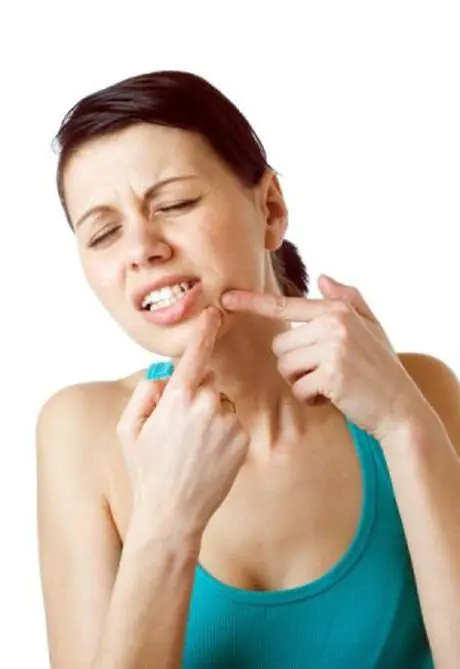
Pay attention to the clothes you wear. Synthetic fabric does not allow moisture to pass through and does not allow the skin to breathe. When wearing such things for a long period of time, bacteria multiply on the body, which causes rashes.
You may be allergic to materials and dyes. In any case, try to wear natural fabrics. Find out which factories sew products using natural dyes.
If you wear clothes that are very tight to your body, then this can also cause acne to appear on your body. Reasons for this: irritation and excessive sweating.
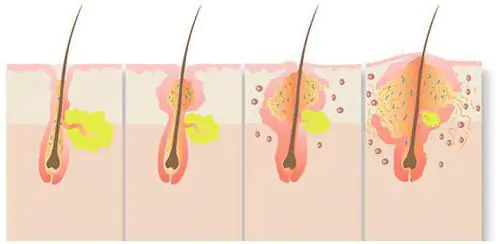
Excessive exposure to sunlight. Ultraviolet radiation has a detrimental effect on the delicate skin in the chest area. This is what causes the rash.
Another reason is long hair. They completely cover the back and do not allow it to breathe.
Rash on hands
Due to an unbalanced diet, as well as an unhealthy lifestyle, acne may appear on the hands. Most often, this phenomenon occurs as a result of a deficiency of some vitamin or mineral. However, it is impossible to determine for yourself what exactly is missing. Be sure to go to the hospital and undergo a thorough diagnosis.
Rash on the stomach
Pimples on the body (causes, treatment should only be determined by the attending physician) are most often the result of a certain disease. Pay special attention to rashes on the abdomen. In this case, acne can appear not only in an adult, but also in a child.
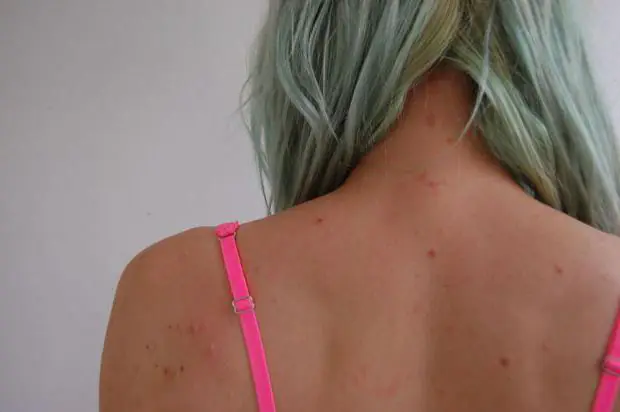
Heat rash is a fairly common occurrence. Very common in babies due to prolonged wearing of diapers. It also occurs due to high temperatures and high humidity.
Measles is a dangerous disease that is contagious. It is characterized by a rash that appears all over the body, as well as a high fever.
Chickenpox is a disease most often found in children. But it can also appear in adults. Characterized by pimples with light contents. To eliminate them, you need to use antiseptic drugs.
Rash on legs
The reasons for the appearance of acne on the body can be very diverse. In any case, they cannot be ignored. After all, they are the result of some disease or problem. Very often, a rash on the legs can appear after shaving, as well as from exposure to cold.

Overweight people may develop acne between their thighs. This happens as a result of the legs rubbing against each other. In this case, you need to choose the right clothes and adjust your diet.
If you notice a rash on your feet, immediately go to a dermatologist. Such a syndrome will not lead to anything good. In any case, take care of your hygiene and choose the right shoes, clothes and cosmetics.
Diseases of the feet
Acne on the body (reasons, photos can be seen in this article) can be the result of serious disorders in the body. This is especially true for the feet, because they lack sebaceous glands. Such symptoms will signal dangerous diseases such as eczema, dyshidrosis and itchy dermatitis. Pimples and blisters may form on the skin and, when opened, release a clear liquid.
Purulent acne on the body: causes
Most often, purulent acne appears on the body, back, shoulders and chest. However, such formations can also form on other areas of the skin. Very often they are a consequence of increased activity of the sebaceous glands. Another cause is hyperkeratosis. That is, the dermis thickens and the sebaceous glands become overcrowded. And this leads to the formation of acne.
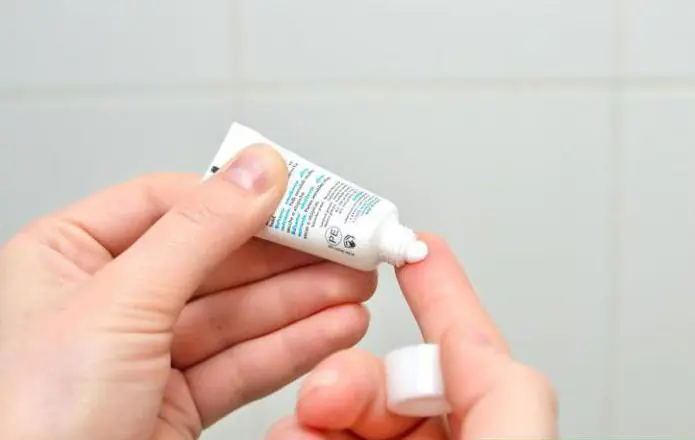
Another reason is the use of antibiotics, especially in cases of long-term use and large dosages. You need to be especially careful when taking steroids.
Acne can appear during hormonal changes in the body, as well as during menstruation.
Pay attention to the cosmetics you use. Preparations with a large number of chemicals lead to the formation of purulent acne. The same applies to low-quality decorative cosmetics.
How to get rid of purulent acne
Of course, you need to visit a dermatologist who can conduct the necessary examinations and prescribe further treatment.

You should not squeeze out the pus, as you may cause an infection. Use iodine. Just apply it directly to the area of inflammation. Do this procedure every day until the inflammation completely disappears. In this case, you will protect yourself from the formation of scars. Aloe juice and medicinal ointments help well.
Medications
Purulent acne on the body, the causes and treatment of which can be very different, requires special attention. In addition to eliminating the cause itself, you need to take care of the foci of inflammation. Wipe your face with herbal infusions. You can use calendula or chamomile. Dermatologists recommend using “Zinerit”, “Levomekol” and “Skinoren”. Each of these drugs will do a great job with purulent acne and make your skin clean and beautiful.

Don't forget to take care of your hygiene and proper nutrition. Such simple rules can save you from many problems. Start doing this right now, and no skin problems will bother you anymore.

Acne on the body can appear at any age. They harass both girls and guys, both women and men. Of course, in themselves they may not interfere, but there are times when a lady needs to beautifully expose her shoulder or back, wearing a stunning dress, or macholy undress to the torso, diving from the pier in front of the girls, whose mouths are open with delight. And then, as luck would have it, acne prevents you from showing your best side. It's a shame, it's a shame, isn't it?
Imagine a night when your beloved, let him gently stroke your body in the dark, suddenly stumbles upon areas strewn with pimples. Br... Can you imagine the further development of the plot? No. You need to get rid of acne! Urgently. The question is, how to treat acne on the body? There are many ways to combat them. But first, let's look at the reasons for their appearance.
Why do acne appear?
The appearance of acne is associated with increased sebum production. The pores are either partially or completely clogged. This often occurs as a result of:
- active work of hormones (during adolescence, in girls during menstruation);
- taking hormonal medications;
- side effects from medications;
- alcohol, smoking;
- carbonated drinks;
- diseases of the liver and gastrointestinal tract;
- metabolic disorders;
- insufficient consumption of clean water;
- insufficient hygiene;
- skin pollution;
- reactions to incorrectly selected cosmetics;
- dry skin on the body;
- irritation (including from mechanical damage, for example, due to squeezing out acne, they are not only squeezed out, but also under the skin);
- staphylococcus;
- skin diseases.
How to deal with them?
Having analyzed the reasons, it is easier to understand how to get rid of acne on the body. First, you need to rule out staphylococcus, skin diseases and other medical problems, including taking medications. Then calm down if you start your period. Because if you don’t touch (don’t squeeze) the pimples that arise as a result of the work of hormones, they will disappear very soon (in three days). During this period, you can simply wipe them with specially developed lotions or, as a last resort, anoint them with salicylic acid.
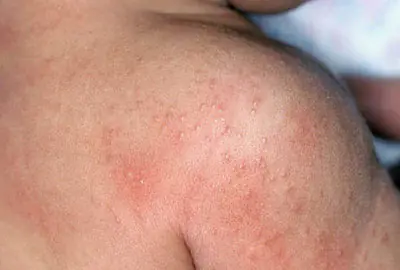
Aloe and tea tree juice effectively eliminates red acne on the body. You can either buy the product at a pharmacy or at a decent cosmetic company (sold in pencil form). If you have aloe vera growing in your (or your grandmother’s) home, you can feel free to cut off a small piece from the leaf and apply it to particularly inflamed areas.
Small pimples are easily removed with a scrub. By the way, if you replace soap with special body products: milk, gel, and don’t be lazy using a brush or washcloth, thoroughly cleansing your skin when washing, then you will forget about acne very quickly. White clay masks cleanse the skin very well and tighten pores, preventing the appearance of rashes.
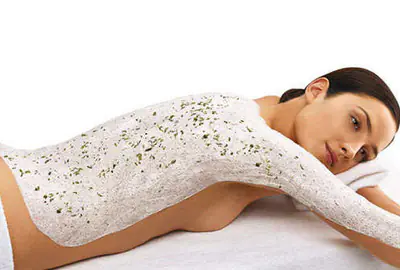
If you have acne due to other reasons: poor lifestyle, addiction to fatty, smoked foods, alcohol, then treatment is useless until you stop ignoring your body’s call to pay attention to it. That is, do not forget that your body needs:
- in high-quality nutrition (from which building material for cells can be extracted);
- clean, fresh drinking water (the body then turns all the drinks we drink into water, but spends additional energy on this, which could be spent on maintaining the skin in perfect condition);
- sun and air baths (or walks in the fresh air);
- light load, such as exercise, walking, squats, jumping (for normal functioning of internal organs and metabolism);
- proper rest (men, 8 women, and up to 10 teenagers need to sleep for at least 6 hours).
For your information: the one who loves himself (and does not imagine that he does this) takes care of himself (his body) and rarely gets sick, including not getting acne. The one who doesn’t really value himself, lives “not for himself”, has no time (or no reason) to take care of himself until the need arises. Remember the wise advice of your ancestors: “Take care of your health from a young age!” Eliminate the causes of acne in a timely manner and you will be beautiful.
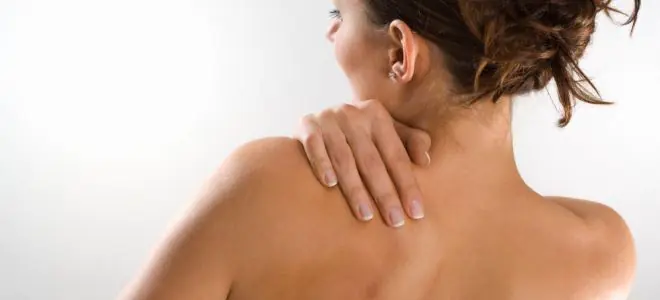
Rashes do not always affect the face area; a significant number of them can form on any part of the body. Pimples on the body not only give the skin an unaesthetic appearance, but can also cause pain, itching, and act as a manifestation of various pathologies. Let's talk about what types of acne are, why they appear, and how to get rid of them.
Types of acne on the body
Despite the fact that the skin on the body is denser and has more powerful protective functions compared to the epidermis of the face, inflammatory elements often form on it. These can be either primary formations in areas of healthy epidermis, or secondary ones - appearing in place of the primary ones in the absence of treatment or under the influence of other negative factors. At the same time, pimples on the skin differ in external characteristics: shape, size, color, presence of contents, quantity. Let's look at some types of acne.
Watery acne on the body
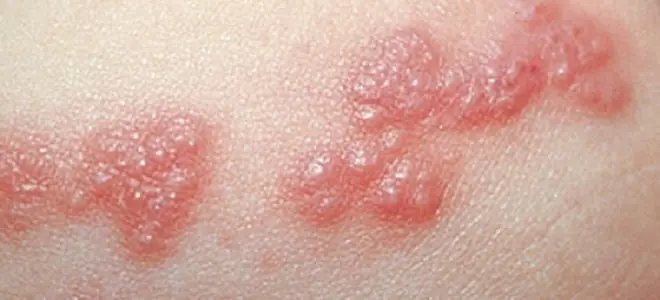
These formations look like hemispherical vesicles rising above the skin, located in the tissues of the epidermis and containing a clear or slightly cloudy liquid inside. Their color can be either flesh-colored or red or pinkish. Water pimples on the body may indicate the following pathologies:
- Scabies - a skin disease provoked by the scabies mite, which initially manifests itself as itchy rashes in the form of nodules, at the next stage turning into blisters, often complicated by a bacterial infection.
- Shingles - a pathology caused by activation of the varicella-zoster virus in the body and manifested by multiple pimples on the body on one side along the nerve trunk, preceded by pink edematous spots.
- Pemphigus – a rare, severe autoimmune disease, the symptom of which is a painful, watery rash of varying sizes throughout the body, which quickly opens and leaves behind erosions.
- Dyshidrosis (dross) – multiple pimples on the body with transparent light contents, which itch, open with the formation of painful cracks, the appearance of which is associated with disorders in the endocrine, nervous, and digestive systems.
- Photodermatitis - a reaction of skin tissue to solar radiation, manifested by watery pimples of various sizes against a background of redness, often accompanied by severe burning and itching.
Red pimples on the body
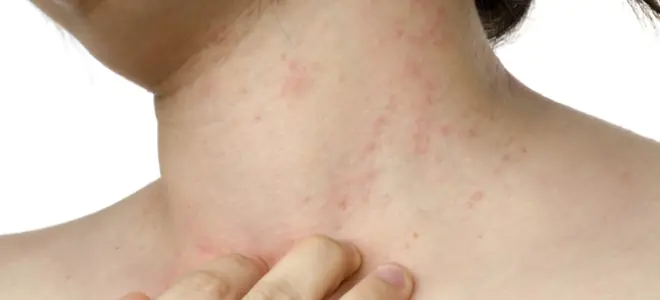
Pimples on the body, characterized by a red color, may appear as nodules or spots of varying sizes. In order to determine the origin of such a rash, it is important to take into account what factors the body has been under recently, what foods and medications have been taken, and what other associated symptoms are present. In most cases, this type of rash is associated with the following diseases:
- Scabies – if red pimples on the body itch, and the intensity of the itching intensifies in the evening and at night, this may indicate damage to the epidermis by scabies mites, infection of which often occurs through close direct contact with a sick person.
- Allergy – reaction to external and internal irritants (food products, medicines, dust, synthetic fabrics, cosmetology and household chemicals, jewelry, etc.).
- Syphilis – one of the manifestations of this sexually transmitted disease is a chaotically located painless rash on the body, which at different stages can look like reddish spots, small pinkish-red or bluish bumps, dense purple bumps.
- Bacterial meningitis – with inflammation of the membranes of the brain and spinal cord caused by meningococci, a bright red nodular rash may appear at an early stage, protruding above the skin and not disappearing with pressure.
- Infective endocarditis – this disease affects the tissue of the heart valve and, as one of the manifestations, may have red pimples that do not fade when pressed, subsequently acquiring a brownish tint.
- Hemorrhagic vasculitis – aseptic inflammation of the walls of skin vessels with multiple microthrombosis, which may be a complication of some microbial pathologies.
- "Children's" infectious diseases – measles, rubella, scarlet fever, chickenpox.
White pimples on the body
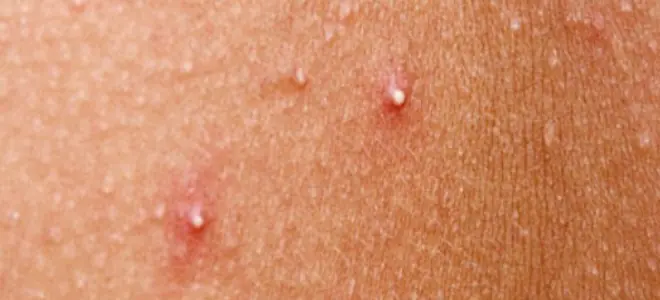
Often, rashes that have a white or whitish-yellow “head” and are characterized by pain are purulent acne on the body. Such elements appear during infectious and inflammatory processes in tissues; they are filled with cloudy exudate that comes out when pressed. The occurrence of pustular pimples can be caused by the following main factors:
- Attachment of a secondary bacterial infection in case of injury or improper care of existing primary rashes (pus is formed as a result of the activity of pathogenic microorganisms).
- Folliculitis - inflammation of the hair follicle with the formation of a red spot or nodule around the hair on the skin, from which a purulent pimple soon forms.
- Furuncle – a purulent-inflammatory formation that covers the hair follicle, sebaceous gland and a section of connective tissue, often caused by the activity of Staphylococcus aureus.
- Acne (pimples) – acne on the body, the appearance of which is largely associated with excess fat formation of the sebaceous glands of the skin and a violation of the process of keratinization of the epithelium.
Large pimples on the body
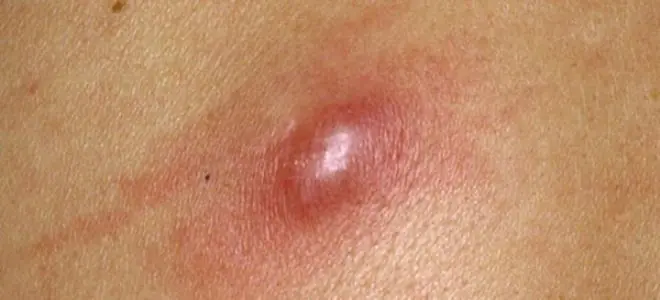
Large rashes are often deep, affecting not only the epidermis, but also the lower layers of the skin. Such pimples on the body are painful, the tissues around are characterized by swelling and redness. Special care must be taken with them, because given the infectious nature of such acne, there is a high probability of pathogenic microbes spreading throughout the body. After the disappearance of such elements, scars and areas of hyperpigmentation may remain.
Small pimples on the body
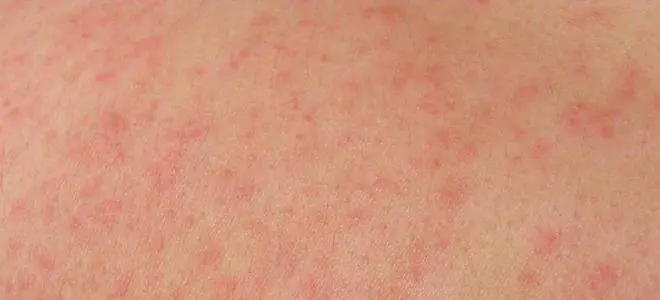
Small bumps or spots that appear can cause no less discomfort than large subcutaneous formations, because Often small pimples on the body itch, cause dryness or weeping of tissues, and are dangerous for infection with the development of purulent processes. In addition, a small rash is often a manifestation of dangerous and contagious diseases that require urgent treatment.
Acne on the body - the causes of what disease?
It is not always possible to determine why acne appears on the body through visual inspection alone. In many cases, this requires additional research, which includes:
- general blood and urine analysis;
- blood chemistry;
- blood test for sex hormones, thyroid hormones;
- ultrasound examination of the digestive organs;
- throat swab analysis;
- allergy tests, etc.
Common culprits of body acne include:
- changes in hormonal levels;
- disorders of digestive and metabolic processes;
- psychological and neurological problems;
- allergens;
- lack of proper hygiene;
- wearing low-quality synthetic clothing;
- infections.
Acne all over the body - causes
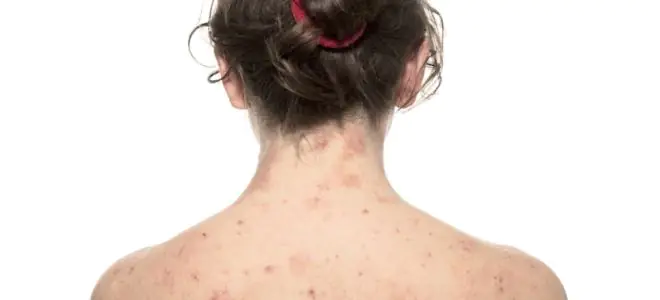
A rash in adults, distributed over the entire surface of the body, can indicate both infectious and non-infectious pathologies: allergies, blood and vascular diseases, acute and chronic infectious diseases transmitted by contact, airborne droplets, and sexual contact. Pathologies provoked by microorganisms (bacteria, viruses, fungi) are in many cases indicated by general intoxication symptoms: increased body temperature, weakness, headache, nausea.
Some people experience so-called cold pimples on the body - inflammatory bright red painful rashes affecting different areas of the body, associated with hypothermia of the body, decreased immune defense in the autumn-winter period. Athletes who take cold showers after intense training are prone to the appearance of such pimples.
Acne on legs
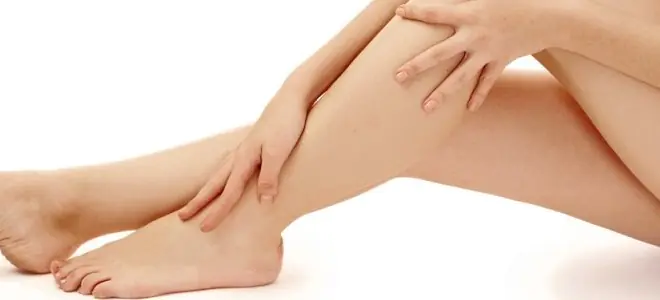
If the rash is localized on the lower extremities, the probable cause may be associated with allergic manifestations. Using low-quality washing powder, wearing nylon tights, or depilatory products can provoke an inadequate reaction. Often, acne on women's legs occurs when the skin is injured during shaving or due to ingrown hairs. If rashes are present on the feet, in the interdigital areas, this may indicate dyshidrosis or a fungal infection.
Pimples on hands
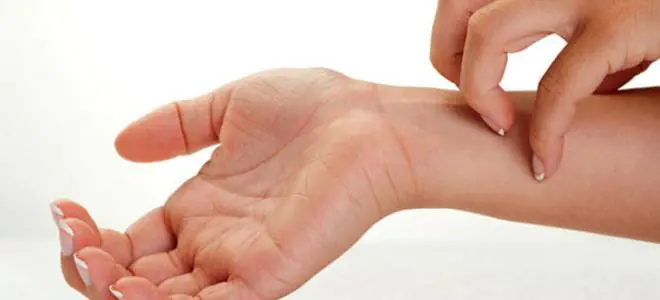
In people with sensitive skin, allergies in the form of acne on the body, especially on the upper extremities, are a common occurrence. In most cases, this is caused by contact with household chemicals, certain metals, and is provoked by exposure to low temperatures and dry air. The localization of the rash on the palms is characteristic of syphilis, on the hands and between the fingers - for eczema (multiple rashes tend to merge).
Acne on the stomach
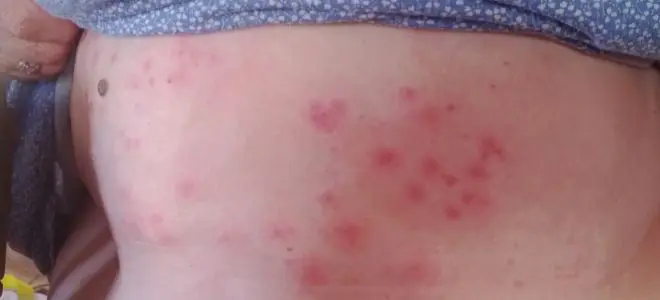
If acne on the body itches, focusing in the abdominal area, this may be a manifestation of scabies, dermatosis, psoriasis, or herpes virus infection. Also, such pimples often indicate allergic dermatitis caused by the influence of foods, medications, and external irritants. In people who are prone to obesity, pimples on the stomach often appear in the hot season due to excessive sweating under tight clothing.
Acne on chest and back

In the upper part of the body, so-called hormonal acne can be localized - acne associated with an imbalance of sex hormones in the body. Some women are prone to such rashes throughout their entire lives, with exacerbations associated with the menstrual cycle. Similar formations in the back and chest area are possible with hypothermia, herpes zoster, and psoriasis.
How to get rid of acne on the body?
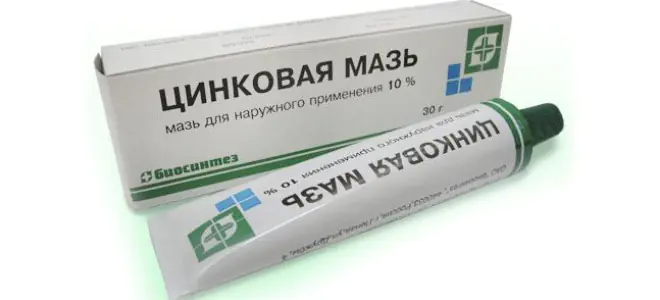
Since acne on the body appears as a result of a huge number of different factors, many of which can only be identified with a thorough specific examination, it is advisable to consult a doctor if any rash is detected. In addition, if the rash is of infectious origin, the risk of infecting loved ones and others increases with improper treatment.
In some cases, acne treatment may not be required at all - the rash will disappear spontaneously after the underlying disease is cured (for example, in the case of measles, chicken pox, rubella). If pimples occur as a result of allergic reactions, it is important to identify the irritant through skin testing and limit contact with it, as a result of which the rash will stop appearing. A huge role in this is played by following a healthy hypoallergenic diet and normalizing the psycho-emotional state.
For dermatological diseases, acne on the body is treated comprehensively - using local and systemic medications, physiotherapeutic methods, lifestyle adjustments and hygiene rules. Infectious lesions necessarily require the prescription of antibacterial drugs, antifungal or antiviral agents, and external antiseptics.
Body acne remedy
Depending on the type and etiology of skin rashes, medications with anti-inflammatory, antipruritic, drying, and disinfecting effects may be prescribed. The use of antihistamines and topical corticosteroids is often required. A specialist can tell you which ointment for acne on the body will have the best effect, and we will look at the list of external remedies that are often prescribed for such problems:



